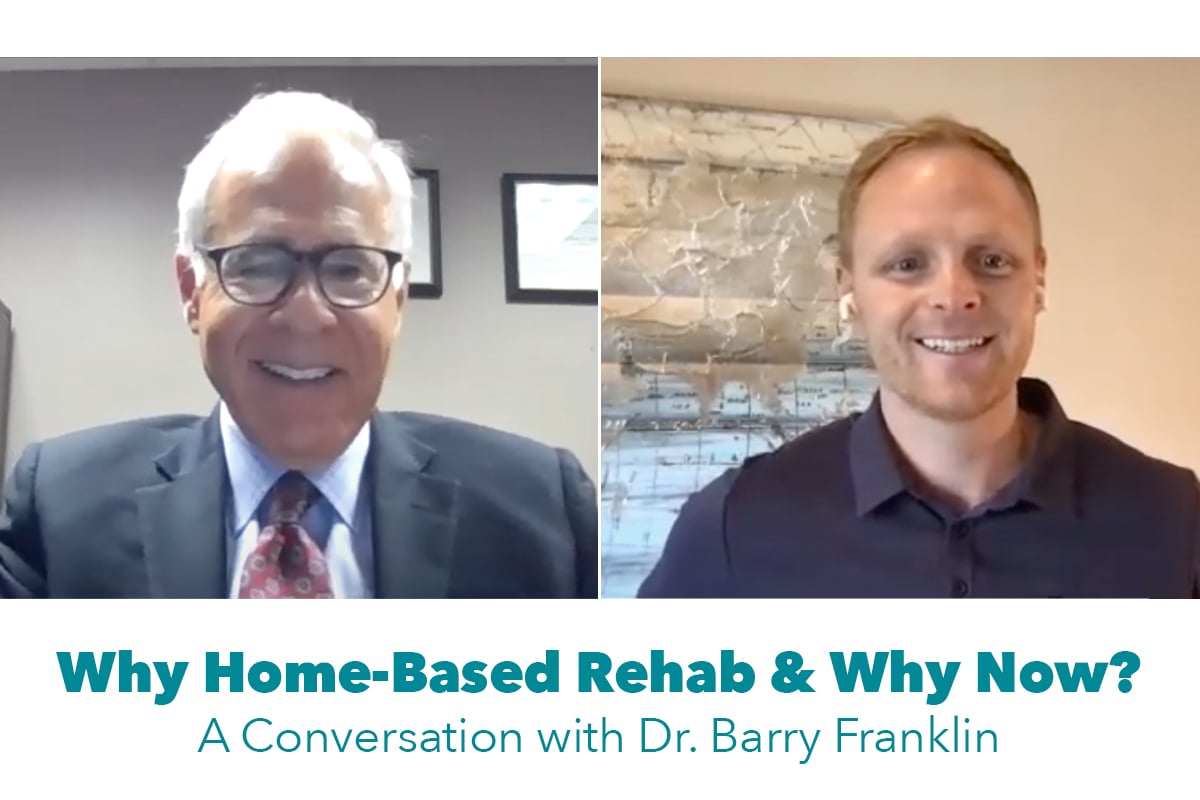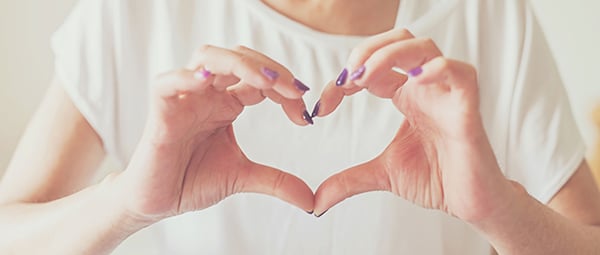
Below is a transcript of an interview with Barry Franklin, PHD. Director of Preventative Cardiology and Cardiac Rehabilitation, conducted by Jared Sieling, CEO of Chanl Health. You can also watch the interview on the Chanl Health YouTube page.
Jared: I'm pleased to be speaking with Barry Franklin, Ph.D. today. He's the Director of Preventive Cardiology and Cardiac Rehab at Beaumont Health in Michigan. Dr. Franklin has been very involved in the American Association of Cardiovascular and Pulmonary Rehab for many years, and even served as the president of that organization in 1990. Recently, Dr. Franklin co-authored a book titled Home-Based Cardiac Rehab, helping patients help themselves. So, thank you for joining us today, Dr. Franklin.
Dr. Franklin: Jared, it's a pleasure to be with you; look forward to our conversation.
Jared: Perfect. So, to start off, as I just outlined, you have a long and successful history in cardiac rehab, the standard onsite programs, you've been such a strong advocate and contributor over the years, but now you've co-authored this book about home-based rehab — or what some call remote or virtual rehab — and somewhat view this as a proposal to change a bit from the way we were doing this. So, my question to you is, why home-based rehab and why now?
Dr. Franklin: Well, it's an excellent question. I think to address your question, I try to emphasize four specific points.
The first point is clear. COVID revealed that outpatient programs that I grew up with, really had an Achilles heel, and that literally, we lost track of patients, we were closed for several months, and really the only way that patients could be reached would be remote or virtual cardiac rehabilitation. So that really hit a nerve, I think, for many of us, and we realized that our programs — strictly the conventional outpatient programs — were incomplete.
In fact, research tells us that overall physical activity for the general population decreased by 33%, sitting time increased by 28%, and overall quality of life decreased, depression increased. These are all bad things for patients with coronary artery disease. So, the conventional program really didn't do justice to us.
Secondly, we recognized for a long time, there are limitations to the conventional programs that I grew up with, and I champion in that only a fraction of those eligible patients typically gets involved in those programs. Most research studies suggest 20 to 30% of eligible patients ultimately enroll. And I'll tell you something else, they don't all finish or they don't all have good attendance.
So, we're only capturing a fraction of people with coronary disease in the rehabilitation setting. So, I view home-based programs as really providing two advantages: improving access and extending care.
Thirdly, I think a critical point is that cardiac rehab involves lifestyle modification and behavior change. When we see patients on an outpatient basis, where they come in two hours a week or three hours a week, most of that hour is devoted to exercise, pulse rates, EKGs, and so on, and so forth. So, our time for teaching and mentoring and counseling is really limited. Why not extend that time virtually to periods of time when we're not seeing them? So essentially, between those one-hour visits twice, or three times a week.
So fourthly, I guess I would view home-based cardiac rehab as shifting the model to better serve patients remotely, to empower patients to help themselves. So, for all those reasons, it simply made good sense to me with this COVID revelation that we need to make some substantive changes.
Jared: That's great. I couldn't agree more. I think when we talk with providers, an initial concern for them, as they think about extending outside the hospital walls, is safety. So, in the book, you address this, this head on, and you even discuss in the book, when and why patients should participate in the medically supervised cardiac rehab program versus some at-home elements. Can you just share your thinking on safety element of it?
Dr. Franklin: Sure. I think the first point that I'd make — and I've been saying this for years — is that cardiac rehab is far more than exercise therapy, per se. Exercise is maybe the hub of the wheel. It's an important component, but it's cardiac rehab — outpatient cardiac rehab is far more than just exercise. I'd encourage providers not to get preoccupied with the safety and recognize that there's still many other components of cardiac rehabilitation that can be delivered besides exercise and can be delivered virtually. I think oftentimes, these other components — smoking cessation, diet, behavior modification — gets shortchanged because we become so preoccupied with myths and target heart rates, and so on and so forth. But there's far more to secondary prevention than exercise alone.
Other points that I would make are that we now realize the overall risk of experiencing a cardiac event, heart attack or sudden cardiac death is really very, very low in exercise-based cardiac rehabilitation programs. Our research at Beaumont showed that we experienced one cardiac event out of every 58,000 hours of patient participation. So, it really was not a high, high-risk event. And for the most part, those events occurred in high-risk patients — patients who we determined had poor ejection fractions, residual ischemia, and so on and so forth.
The fact of the matter is regular physical activity reduces the risk of future cardiac events by up to 50%. We also know, Jared, that people who are regular exercisers experienced a phenomenon called "exercise preconditioning." Whereas if people are regularly physically active, and they experience a cardiac event, it's less severe.
So, the take-home message here is they benefit from exercise preconditioning and the risk of mild to moderate exercise training is very, very low period.
Finally, I guess I would emphasize the fact that it is true that there are certain subsets of the cardiac population who would benefit from direct medical supervision face-to-face, but that is a very small subset.
Jared: That's great. I think that differentiation between the exercise component and the other components, when talking about medically supervised is an important distinction to make. So, speaking of that holistic approach of cardiac rehab, much more than the exercise in the book, you do walk through those six key components of an effective cardiac rehab program. I think you've just mentioned most of them: exercise, diet, smoking cessation, risk factor modification, stress reduction, and then adjunctive medical therapy. So outside of the exercise component, how can home-based cardiac rehab address those other components effectively?
Dr. Franklin: I think all six of those components that you just mentioned share a common denominator, and that they require behavior, behavioral or lifestyle changes. And one of the things I think we do well in outpatient programs, supervise group programs, is we watch carefully during the exercise period.
But we have really very little time to do counseling, to do education, and so on and so forth. They're in for the hour, and the next group will come in. So, I think, from my perspective, there's a need to continue that education virtually, via home-based programs, where extending the care and tools outside this limited face-to-face patient time, I think we should be able to empower patients to a greater extent, to achieve those goals.
I oftentimes say the single most important person who determines your destiny, relative to cardiovascular disease, is not your cardiologist who you see once a year for 10 minutes, or even the cardiac rehab staff. It's you, the person you see in the mirror every day. And I think we have to do a better job teaching you the key elements to success, cardiovascular risk reduction, lifestyle change, and so on and so forth.
There's lots of data now to suggest that there are proven methodologies, which we can use, and I believe probably better virtually than in a few minutes in an outpatient program, called motivational interviewing, called readiness to change, that can really facilitate those things. So, I think what we're really talking about is a hybrid model, especially for people with high, high-risk where they need a medical supervision, but they also can be educated, virtually, via zoom calls and texts, and so on and so forth.
Jared: So yes, exactly. So, I guess lastly, would be do you have any other kind of take-home messages for those watching, that we haven't discussed yet?
Dr. Franklin: I tell patients, "It's not what you say you're going to do. It's what you do that really makes a difference." And the reason I say that is because we've learned, if anything in the success literature, the universe rewards action, not saying I'm going to do it, but doing it. So those are the key things that I leave with patients.
Lastly, I emphasize we have many patients in their 70s, 80s, and 90s, who are out living their counterparts with the who didn't have heart disease. So, heart disease is not a death sentence. The most important thing is to take responsibility, change your lifestyle, take prescribed medications, exercise regularly, and at least over the initial six months gradually increase your workloads. Don't stay at two miles an hour, zero percent grade for the next two years. You should gradually increase your speed or your grade or both so that your fitness improves because fitness conveys more protection than simply being physically active. Those are my take home messages.
Jared: Those are great. Much appreciated. Dr. Franklin, it's been an honor and a pleasure talking with you today. Thank you for taking the time to do this. We look forward to your continued work.
Dr. Franklin: Thank you so much. Thanks for the opportunity.
"Home-Based Cardiac Rehabilitation" by Drs. Barry Franklin and Weimo Zhu, can be purchased directly from the booklet’s publisher Healthy Learning: www.healthylearning.com or (831) 372-6077. Bulk discounts (70%.....10 or more copies) are available at $3 per booklet, plus shipping and handling.
Programs, resources, or materials mentioned or referred to are for informational purposes only and are not an endorsement by ScottCare Cardiovascular Solutions.


